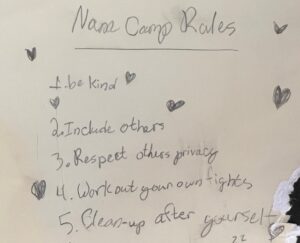I don’t have a bucket list. But I did set four big broad life goals for myself about 10 years ago. They are doing work I like at a more manageable pace, travelling more, spending time with family, and having fun friends that I spend time with. Happy to say, I’m meeting these goals fairly well at this point.
friends that I spend time with. Happy to say, I’m meeting these goals fairly well at this point.
My sister does have a bucket list. About 6 months after she lost her husband to cancer last year, she was still trying to figure out how much travel she was willing to do with family and friends. She mentioned to my husband and I that seeing the national parks was on her bucket list. My husband jumped on the idea and proposed a multi-week road trip itinerary to three parks – Yellowstone, Grand Tetons, and Glacier. My sister was in! Together they worked out the details and booked all the places we’ll stay – whether it’s one night while continuing to our park destinations or several nights near each of those parks.
That trip is happening now. My sister has been my best friend for as long as I can remember – she is only 16 months older than me. My husband and I have been best friends since the mid-1970s. I know the three of us will have a great time with lots of laughs and deep conversations as we traverse the miles together and take in the incredible scenery. She can check it off her bucket list and I’ll be meeting two of my big goals. Nothing wrong with that!
There is no “so what” to this post other than to encourage you to stay focused on your bucket list or life goals. I wish you all a happy end to the summer and hope you too have carved out some time for R&R with family and friends these past few months.
Related Posts:
Vacation season reminders for a more balanced life









